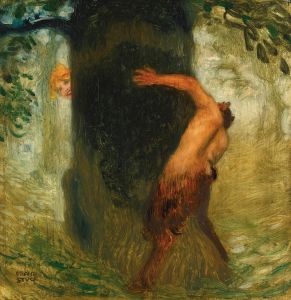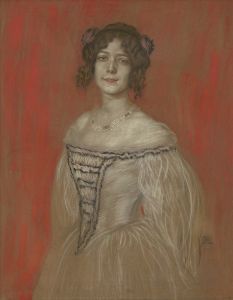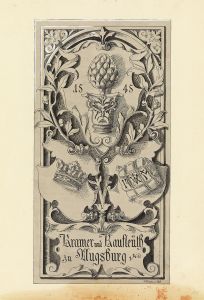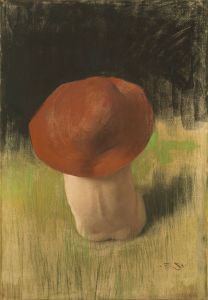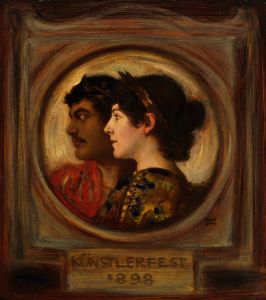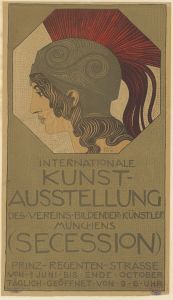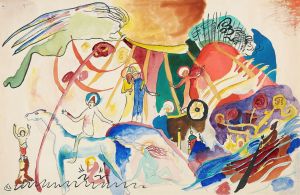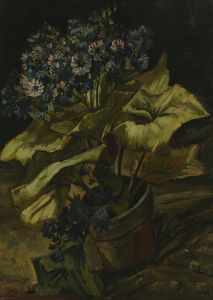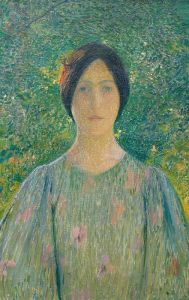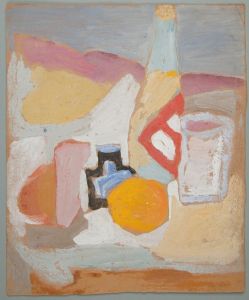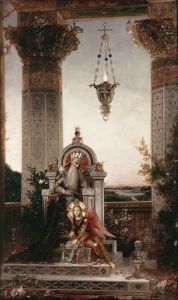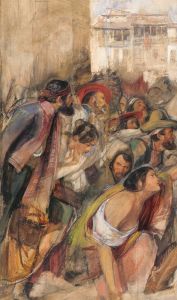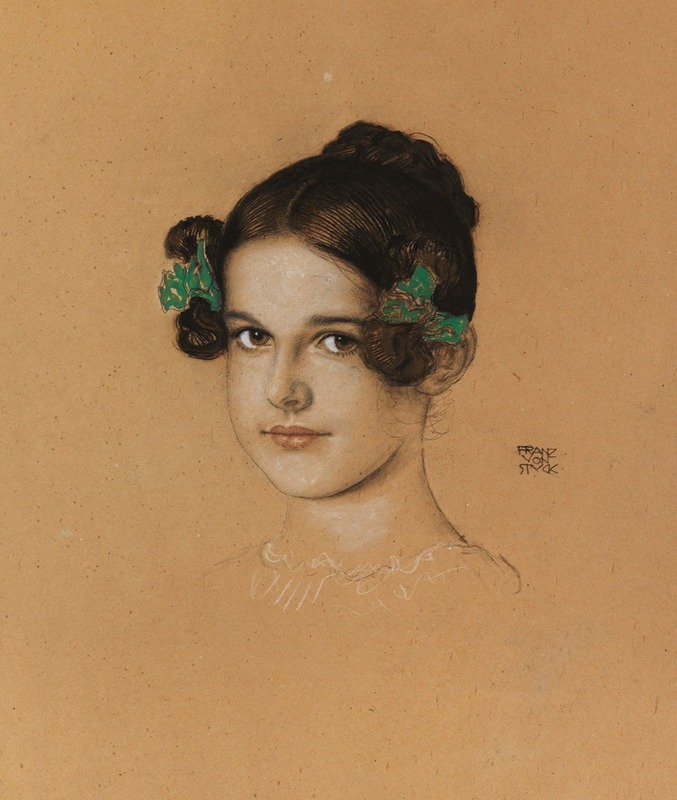
Bildnis der Tochter Mary mit grünen Schleifen
A hand-painted replica of Franz von Stuck’s masterpiece Bildnis der Tochter Mary mit grünen Schleifen, meticulously crafted by professional artists to capture the true essence of the original. Each piece is created with museum-quality canvas and rare mineral pigments, carefully painted by experienced artists with delicate brushstrokes and rich, layered colors to perfectly recreate the texture of the original artwork. Unlike machine-printed reproductions, this hand-painted version brings the painting to life, infused with the artist’s emotions and skill in every stroke. Whether for personal collection or home decoration, it instantly elevates the artistic atmosphere of any space.
"Bildnis der Tochter Mary mit grünen Schleifen" (Portrait of the Daughter Mary with Green Ribbons) is a painting by the German artist Franz von Stuck, created in 1906. Franz von Stuck (1863-1928) was a prominent figure in the Munich Secession movement and is known for his symbolist and art nouveau works. He was a painter, sculptor, and architect, and his works often feature mythological and allegorical themes.
The painting depicts Stuck's daughter, Mary, who was born in 1896. In this portrait, Mary is shown as a young girl, approximately ten years old. She is dressed in a white dress adorned with green ribbons, which is the source of the painting's title. The green ribbons add a touch of color and contrast to the otherwise subdued palette of the painting. Mary's pose is calm and composed, and her expression is serene, capturing a moment of innocence and tranquility.
Franz von Stuck's style in this painting is characterized by his meticulous attention to detail and his ability to convey the personality and mood of his subject. The background of the painting is kept simple and dark, which helps to draw attention to Mary's figure and the delicate features of her face. The use of light and shadow in the painting is masterful, highlighting the texture of the fabric and the softness of Mary's skin.
"Bildnis der Tochter Mary mit grünen Schleifen" is a fine example of Stuck's portrait work, showcasing his skill in capturing the essence of his subjects. The painting reflects the artist's personal connection to his daughter and offers a glimpse into the private life of one of Germany's most celebrated artists of the early 20th century.
Franz von Stuck was a founding member of the Munich Secession, an association of artists who sought to break away from the traditional academic art institutions and promote modern art. His work was highly influential in the development of German art during this period, and he was known for his innovative use of symbolism and his exploration of psychological themes.
In addition to his painting, Stuck was also an accomplished sculptor and architect. He designed his own villa in Munich, known as the Villa Stuck, which served as both his residence and studio. The villa is now a museum dedicated to his life and work, housing many of his paintings, sculptures, and architectural designs.
"Bildnis der Tochter Mary mit grünen Schleifen" remains one of Franz von Stuck's most beloved works, admired for its beauty, technical skill, and emotional depth. It continues to be celebrated as a testament to the artist's talent and his enduring legacy in the world of art.






